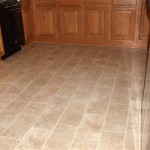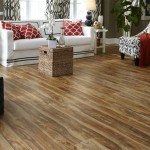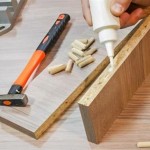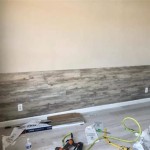Understanding Engineered Wood Flooring Installation
Engineered wood flooring offers a durable and stylish alternative to traditional hardwood flooring. Its construction, with multiple layers of wood veneer bonded together, provides stability and resistance to moisture and temperature changes. The installation process, while often involving skilled tradespeople, can be understood by those with a basic understanding of woodworking and home improvement. This article will delve into the key aspects of engineered wood flooring installation, providing a comprehensive guide to its nuances and best practices.
Preparation is Key: The Foundation for Success
Laying a solid foundation is crucial for a successful engineered wood floor installation. This phase involves various essential tasks to ensure a smooth and long-lasting result:
- Surface Preparation: The subfloor must be level and free of imperfections. This may involve leveling uneven areas with self-leveling compound, patching cracks and holes, and ensuring adequate moisture control.
- Moisture Barrier: A moisture barrier, such as a plastic sheet, is necessary to protect the wood from moisture from below. This is especially important in areas with high humidity or basement installations.
- Underlayment: An underlayment layer is often installed over the moisture barrier. This provides cushioning, reduces noise, and creates a smooth surface for the flooring. Various underlayments, including foam, cork, and rubber, offer different levels of comfort and sound absorption.
Proper preparation ensures that the flooring will be properly supported and that the installation process will be straightforward. Neglecting these steps can lead to problems like uneven floors, squeaking, and premature wear.
The Installation Process: A Step-by-Step Guide
Once the subfloor is prepared, the actual installation process can begin. This often involves the following stages:
- Layout and Acclimation: Before starting installation, it's essential to lay out the planks in the desired pattern, taking into account room dimensions and features. This allows for accurate cuts and eliminates waste. The planks should also be acclimated to the room temperature and humidity for several days to prevent warping or shrinking.
- Installation Method: Engineered wood flooring can be installed using various methods, including nail-down, glue-down, and floating. Each method has its own advantages and disadvantages, and the best choice depends on the specific flooring type and the subfloor condition.
- Nail-down: This traditional method involves attaching the planks to the subfloor using nails or staples. It is best suited for solid subfloors and allows for easy repairs.
- Glue-down: This method involves using a specialized adhesive to bond the planks to the subfloor. It is suitable for both solid and plywood subfloors and offers excellent stability.
- Floating: This method involves installing the planks without attaching them to the subfloor. The planks are held together by a tongue-and-groove system and are allowed to move slightly. It is a popular choice for areas with uneven subfloors or where soundproofing is desired.
- Cutting and Finishing: Once the planks are laid, they need to be cut to fit around obstacles like doorways, columns, and other fixtures. The edges of the planks may also need to be trimmed to create a seamless appearance. The installation process is then completed by adding finishing touches such as moldings, baseboards, and transition strips.
The specific details of the installation process will vary depending on the chosen method, the type of engineered wood flooring, and the room's characteristics. It is always recommended to consult the flooring manufacturer's instructions for specific guidelines and recommendations.
Maintenance and Care: Preserving the Beauty
Maintaining engineered wood flooring involves regular cleaning and proper care to preserve its appearance and longevity:
- Regular Cleaning: Sweeping or vacuuming regularly helps remove dust and debris, preventing scratches and dullness. Damp mopping with a mild cleaning solution is also recommended, but excessive moisture should be avoided.
- Refinishing: Engineered wood flooring can be refinished multiple times, unlike solid hardwood flooring. This involves sanding down the top layer to remove scratches and imperfections and applying a new finish. Refinishing should be done by a professional to ensure proper results.
- Protection: Placing area rugs or mats in high-traffic areas can help protect the flooring from scratches and wear. Using furniture pads on the legs of heavy furniture will also prevent indentations.
By following these maintenance tips, you can ensure that your engineered wood flooring remains beautiful and functional for years to come.

How To Install Lock Engineered Hardwood Flooring

A Comprehensive Guide On Engineered Wood Flooring Installation Mersey

How To Install Lock Engineered Hardwood Flooring

How To Lay Engineered Wood Flooring A Diy Guide For Everyone

Engineered Hardwood Vs Laminate Flooring

What Is Engineered Wood Flooring Made Of And Beyond Blog

How To Install Engineered Hardwood Floors 4 Easy Installation Options

How To Install Lock Engineered Hardwood Flooring

Engineered Hardwood Flooring Installation Guide Easy Tips

Guide For Engineered Wood Flooring Major
See Also







